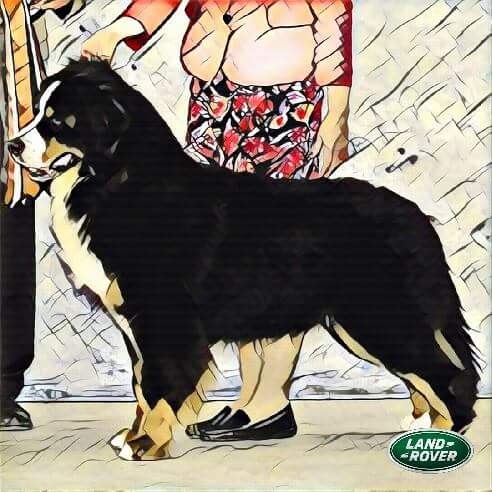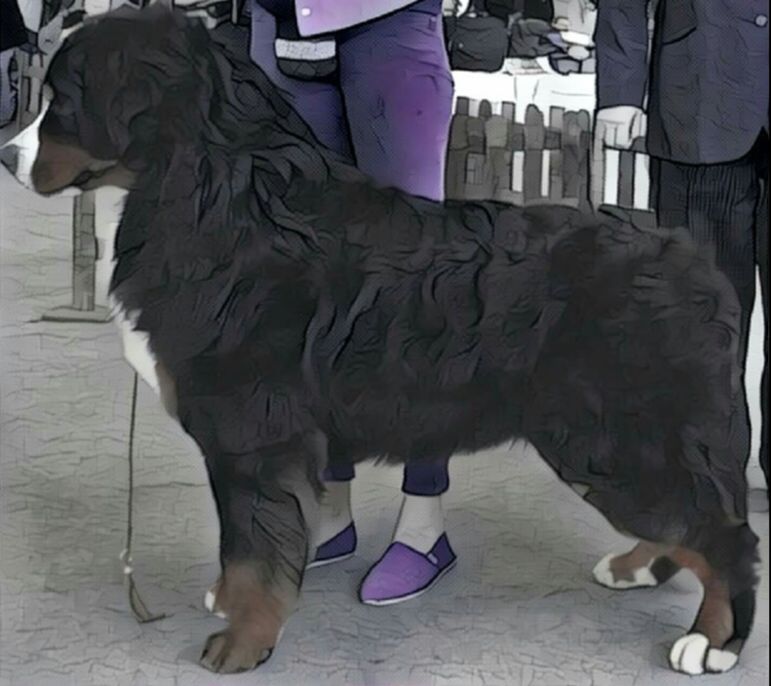- One refers to the height at withers of the dog verses body length (from point of shoulder to buttock), which should be at a ratio of 9:10.
- The other is the length of leg (ground to the elbow) vs the height at withers. This should be at a ratio of 1:2. Notice I didn't say that body depth is equal to the length of leg, as this in some cases is not true. The depth of body at brisket must be equal to OR GREATER than the length of leg.
What does this all mean and what impact does it have for our breed...?
The body proportions of 9:10 are important as it differentiates our breed from others such as the Newfoundland (which can be longer in body). It is a signature of our breed and has been widely ignored in many peoples breeding over the years.
This could be due to alternative priorities in breeding, such as trying to lessen the incidence of health issues such as cancer.
Or perhaps another explanation is this... have you ever heard it said "it is OK for bitches to be a little longer, allows for more puppies etc". In my mind this is an 'old wives tale' and is far from the truth. No where in any standard does it give this allowance. Also, does it not make sense that longer bitches will breed longer dogs. The cycle is self perpetuating and hence the reason why many of our quality dogs are longer in body or shorter in leg than is ideal.
Another plausible explanation as to why Bernese are becoming longer in body and shorter in leg, is the modern trend within the dog show world for a dog that can race around the ring with an extended gait. Bernese should be shown at a 'Slow Trot". This is for good reason. A squarer dog is unable to move at an overly fast pace without crabbing or altering the movement in some negative way. Please breeders, only breed true to type and resist the trends which will pass in time.
Apart from being a defining part of our breed (adding to 'Type') there is also a very practical reason for our breed to have squarer body proportions. When looking at draft breeds in Horses (such as the Clydesdale), they are required to be shorter coupled and therefore squarer in body proportions for the reasons of strength when pulling large loads. Bernese are a general purpose farm dog, their job was one of varying capacities on the farm. Their demeanour was not to be cumbersome and they had to have a sensible working mentality. Whilst they weren't a dedicated draft breed, they were regularly used for this purpose and any weakness that would have inhibited it's usefulness as a draft breed, would have been bred against. Overly long bodied dogs would not have served its purpose as a draft breed.
Once you are governed by these body proportions with a draft purpose for the breed, it makes sense to then to breed within this framework, a dog that is moderate in angulation with well let down hocks. I will leave this for a separate discussion as I could write paragraphs on this also.
(Please note... any photos being used are to display the points being made in that blog only. In no way are my comments to be reflection of the dog overall, or the breeders efforts to improve the breed.)
In summary...



 RSS Feed
RSS Feed